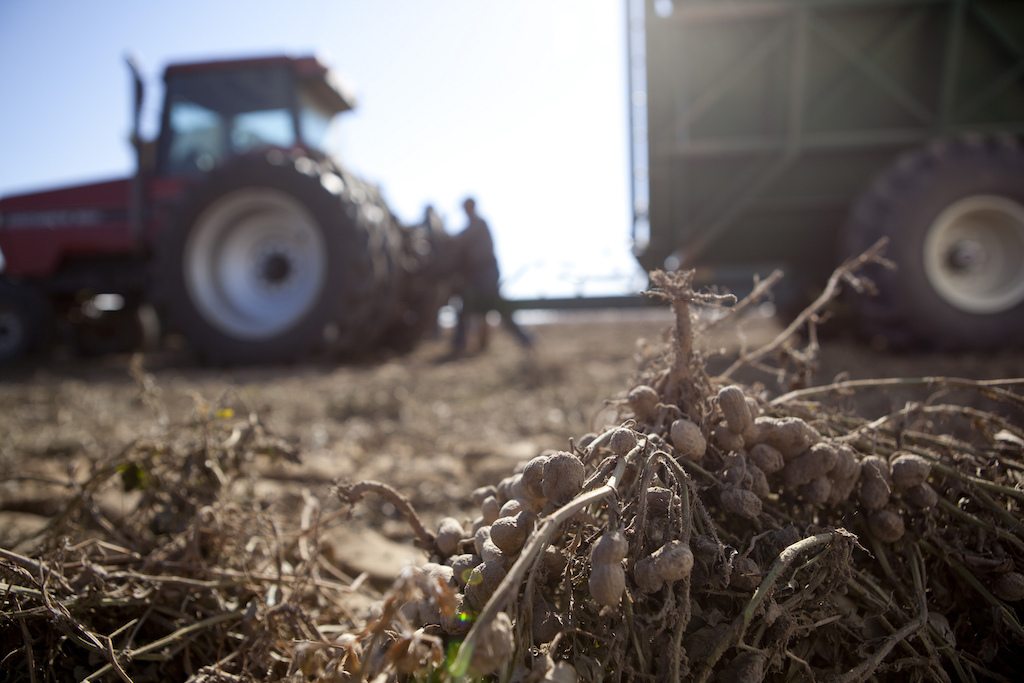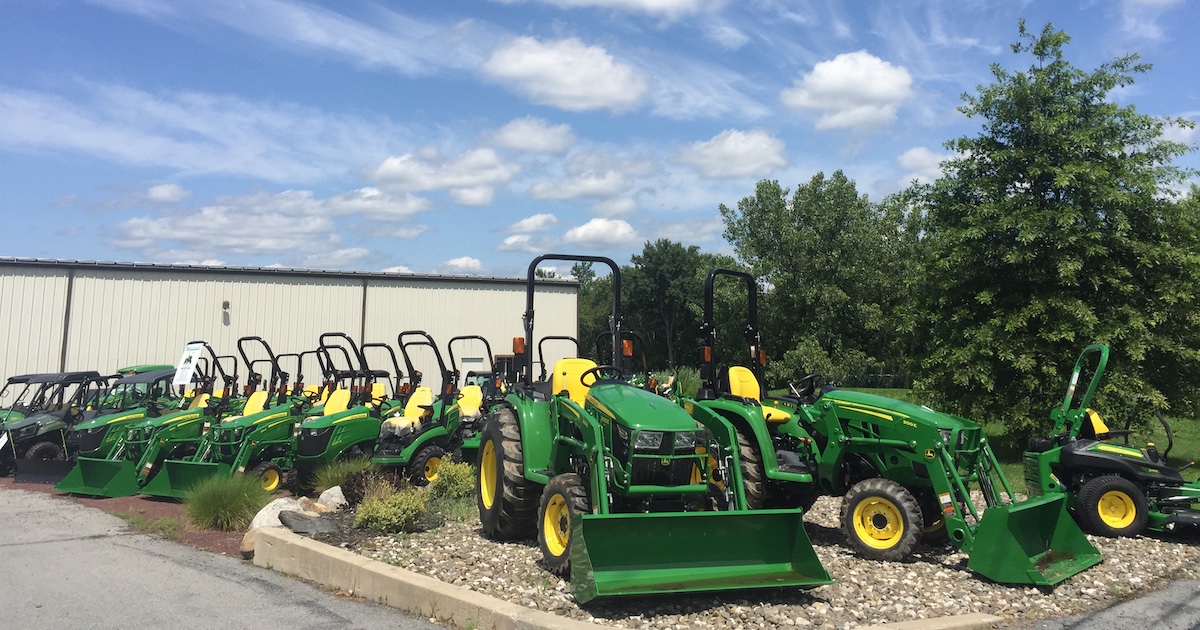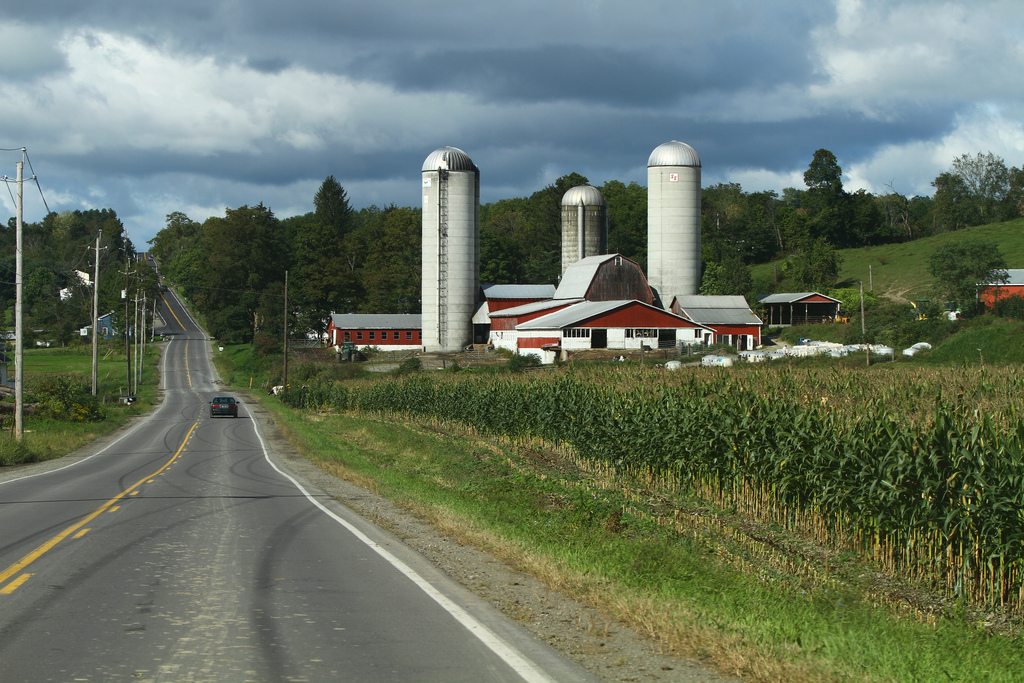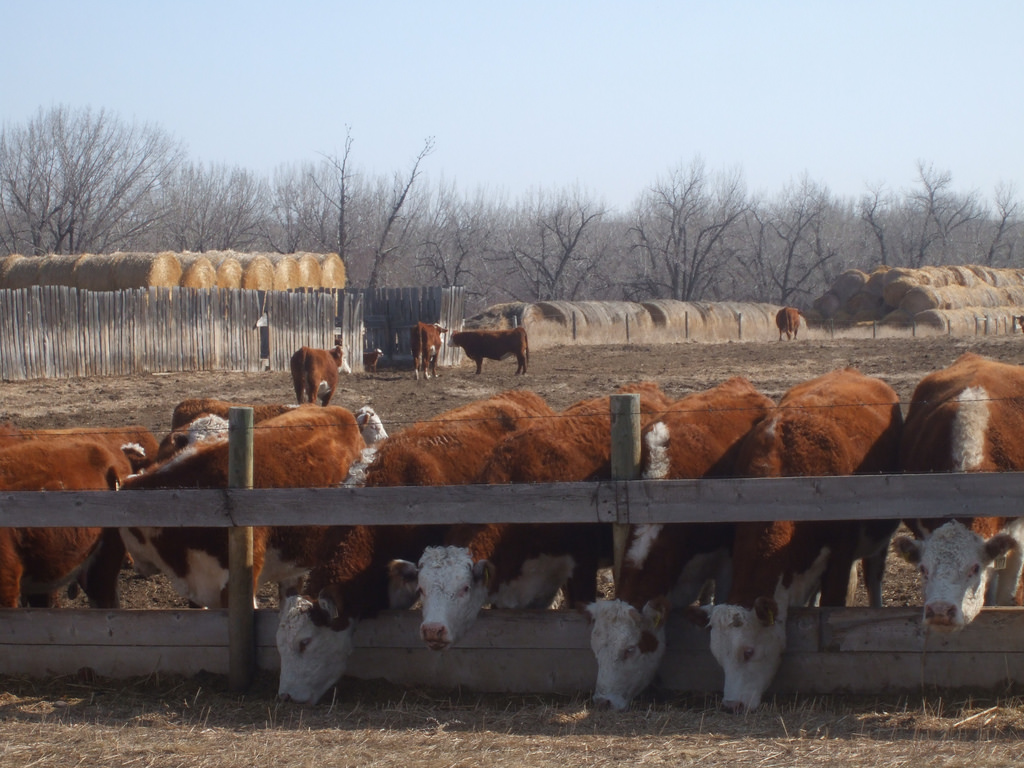“With global populations rising, maximizing yields while minimizing impacts becomes a critical science,” intones the narrator, over swelling strings and steadily driving percussion. It’s the type of commercially uplifting accompaniment you’d hear in a promotion for a marathon or the big reveal of a FitBit that detects cancer. “It takes the boldest visions, the biggest machines, and the grandest design to deliver the ancient commodity to the people, to new frontiers, faster and more efficiently than ever before.”
But this isn’t an ad for a new Monsanto seed that can grow without water, soil, or light. This promotional video is introducing something most of us have never thought about, though it’s a pivotal step in a process that makes our peanut butter creamy, our Reese’s cups cheap, and our snack mix pebble-free. That is, peanut shelling.
 Courtesy of Premium Peanut
Courtesy of Premium Peanut
Here’s how that happens: When peanuts are ready for harvest, a tractor attachment called a digger pulls the whole plant out of the ground and flips it over, peanut-side up, to dry in the field. A few days later, a combine rolls through to pass the roots, vine, and nut pods through its jaws, spitting out the vines (which later become hay) and collecting the nuts. The nuts are trucked to a buying point, where they’re cleaned, graded, and sold to a shelling plant. After that, the farmer never sees them again.
 Courtesy of Premium Peanut
Courtesy of Premium Peanut
It’s an elegant process, one that makes it seem like all our agricultural problems could be solved if only we’d hire the right engineers. But the economics of the peanut industry are in no way as precise and frictionless as a nut’s journey from ground to jar. Though their hands may never touch the plant itself, farmers and shellers and buyers are all part of a web of power dynamics that shift dramatically when the winds change at the United States Department of Agriculture (USDA) or bad weather damages the crop. Too often, it’s the farmers who feel like they’re shouldering the risk burden for the entire industry. That’s why, in 2014, a group of farmers in southern Georgia banded together to build a shelling plant of their own. They wanted more control over the system.
In less than two years, Premium Peanut—their shelling plant—would become the largest in the world. But it came at a price of $50 million and considerable risk for its stakeholders. Shelling plants are abundant in Georgia. It seems like it would be easier to negotiate for better terms with shelling companies than build something new from the ground up. Why did they have to start from scratch? Well, the answer is complicated.
 Courtesy of Premium Peanut
Courtesy of Premium Peanut
The trouble is that the supply of this particular commodity fluctuates wildly from year to year. Between 2013 and 2014, for instance, it rose by a billion pounds, or almost 25 percent, from 4.2 billion to 5.2 billion.
It’s the peanut shellers who are responsible for marketing and selling the final product. And consumer demand, of course, doesn’t rise and fall in sync with the crop. So shellers have to manage their risk by adjusting how many peanuts they actually buy. No one wants to be left with tons of product they’ve paid for but can’t resell.
 Courtesy of Premium Peanut
Courtesy of Premium Peanut
Of course, a slimmed-down contract isn’t great news for the farmer. Peanuts are a rotation crop. Farmers alternate peanuts with cotton because the legumes fix nitrogen in the soil and cotton uses it up. If the farmer plants a single crop in the same place every year, the nutrients in the soil get depleted and yields suffer. So the cotton crop depends on the peanut crop, which depends on the contract with the sheller, who depends on the market. A farmer can always plant extra peanut acreage outside of his contract, but then he risks being left with lots of nuts he can’t sell.
To be clear, this is a gross oversimplification of the peanut market. Like many agricultural commodities, peanuts are supported by a variety of programs from the federal government. The government uses tools like low-interest loans guaranteed by a farmer’s crop, and price supports to make sure farmers make some money. If a farmer can’t sell her crop, the government can repossess it as repayment for the loan. It’s a system that leaves the farmer with some added security and the government with a lot of leftover peanuts.
(Here’s the Washington Post editorial board on the peanut commodity: “The heavily lobbied but, to laypersons, incomprehensible provisions of the 2014 farm bill incentivize growers in several Southern states to increase land devoted to peanuts rather than other crops, even when peanut prices dip. The result has been production of a huge unmarketable surplus, which the government is committed to take off farmers’ hands at a hefty loss to taxpayers. The USDA accumulated 113,000 metric tons of peanuts in 2015,” the editorial reads. In the spring of 2016, the Obama administration drew criticism for its plans to ship some of the peanut surplus to Haiti through USAID. But Haiti grows a large supply of its own peanuts. Advocates said that the shipment would be unfair to the its 100,000-plus peanut farmers: Who can compete with a glut of free product?)
 Courtesy of Premium Peanut
Courtesy of Premium Peanut
You can start to see why farmers had to think outside the box. Their problems were less about making more money and more about guaranteeing a buyer for their crops. And that wasn’t something shellers could offer every year, since they were acting out of self interest, too.
 Courtesy of Premium Peanut
Courtesy of Premium Peanut
So, inspired by Tifton’s model, the future farmer-owners began their own negotiations. They wanted the plant up and running in time to process the 2015 crop. It would take a year and half to plan and build Premium Peanut, which would go on to become the largest peanut-shelling plant in the world, processing 30 tons of peanuts per hour. Today, it serves 200 farms. And this month marks the one-year anniversary of the ribbon-cutting ceremony.
 Courtesy of Premium Peanut
Courtesy of Premium Peanut
The model doesn’t necessarily make more money for farmers. They’re still at the mercy of the market, and they still get support (and often, a guaranteed customer) from the federal government. But a cooperative does guarantee some stability: “With us, they know that if they bought a thousand shares of the company, they have a home for a thousand tons of farmers’ stock peanuts every year. We will buy them, we will warehouse them,” says Karl Zimmer, Premium Peanut’s CEO.
And in really good years, the cooperative model does mean extra profit. If the plant makes money, the farmers receive dividends at the end of the year. “They know they will get 100 percent of the value for that product, whether they get it as an upfront payment, at harvest, which we call an option payment, or they get it at the end of the year as a dividend of the profits that we make,” Zimmer says.
To get a cooperative off the ground, the farmers needed the buying points (which work with the shellers) to get on board. “The farmers said, ‘look, we want to do this. So … we need you to support us or we’re going to leave you,’” Zimmer explains. “A lot of our buying points—call it half—also have cotton gins, they also are in the chemical business, so they sell farmers fertilizers, etcetera. So they said, ‘Well, if we lose them as peanut customers, we’re at risk of losing them as cotton customers or fertilizer customers.’”
Premium Peanut was able to get seven buying points on board before it broke ground. Those businesses even furnished some up the startup costs, which were repaid as more and more farmers bought shares in the company. But even with commitments from the buying points and lots of farmer interest, the project had a long way to go.
 Courtesy of Premium Peanut
Courtesy of Premium Peanut
Indeed, it was an ambitious project: building the facility would cost $50 million. Zimmer says the company raised about half that money by selling shares. It borrowed about $18 million. And it got a $7 million low-interest loan from the federal government through the New Markets Tax Credit program, a tax credit that incentivizes community development in low-income communities. Developers sited the plant in Douglas, Georgia (population 12,000), which qualified for the incentive.
Farmer Elton Brooks bought into the plant during the pre-construction phase. “I can plan ahead four or five years and know where I’ll have peanuts five years from now,” he explains. “It’s made me feel better about going out and buying several hundred thousand dollars’ worth of new equipment.”
 Courtesy of Premium Peanut
Courtesy of Premium Peanut The Premium Peanut plant
The Premium Peanut team worked with Lewis M. Carter Manufacturers to get the plant off the ground in record time. The “fully-automated superstructure” was built on a 50-acre plot in less than a year, just in time to start midseason on the 2015 crop. As a shelling plant, Premium Peanut takes on the responsibility of the businesses it’s replacing. It shells, tests, bags, markets, and resells the peanuts it processes. The only difference is that the money it makes goes back to the farmers.
Though it’s still very new, Premium Peanut has been successful so far. It’s selling about a third of its peanuts on the export market, and its product is used in everything from peanut butter to candy manufacturing. Finding the right buyer is just as complex as the rest of the process. Zimmer says there are thousands of different sliding-scale peanut grades based on size, breakage, and the presence of toxins caused by mold. (If you’re wondering, the nuts with the highest concentration of aflatoxin from mold are sold to China, where they’re processed into peanut oil. The extraction process removes the toxins.)
 Courtesy of Premium Peanut
Courtesy of Premium Peanut Bagged peanuts await shipping
As for the farmer-owners, they’ll receive the first dividends in early 2018. “Nobody’s going to get rich,” admits Lee Taylor, human resources director for Premium Peanut. But any profits they share from the plant will be icing on the cake. When a farmer sells to a shelling plant in which the farmer has no ownership, “all you get is the money you settle on initially,” he says.
Of course, with a commodity’s economy so dependent on federal policy, farmer-owners have another reason to invest in vertical integration: No one knows where the next farm bill will lead. If federal subsidies come under threat, a guaranteed peanut buyer will be all the more valuable.











